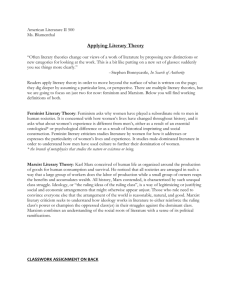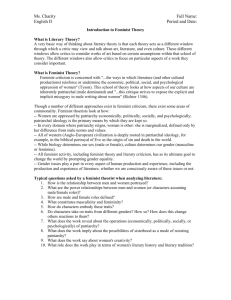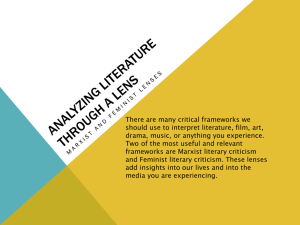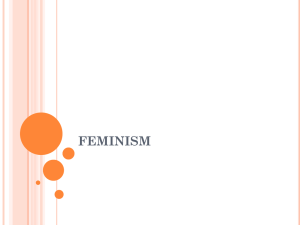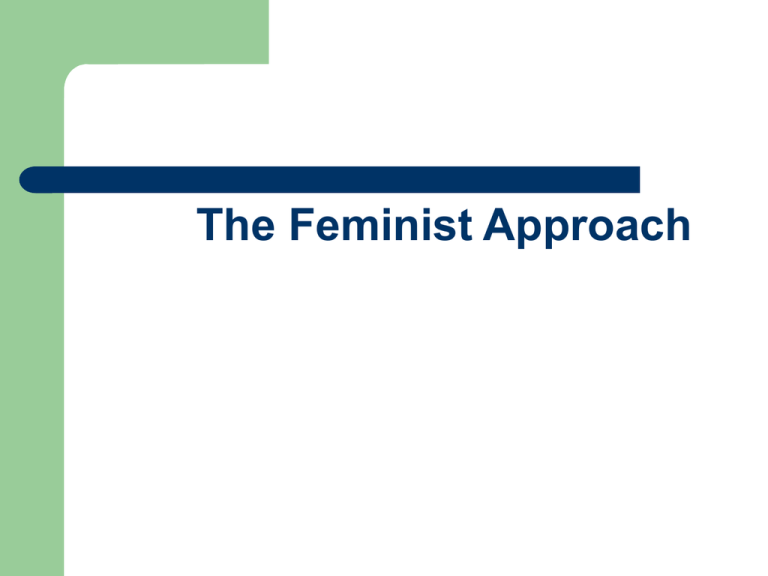
The Feminist Approach
Overview
Feminism has often focused upon what is absent rather than
what is present, reflecting concern with silencing and
marginalization of women in a patriarchal culture.
Feminism is overtly political (unlike other literary approaches
we have examined so far) and can attack other approaches for
their false assumptions about women.
Books like The Second Sex (1949), de Beauvoir; The Feminine
Mystique (1963),Friedan and Sexual Politics (1970), Millet
shaped the ideology behind feminine literary criticism.
Phases
Elaine Showalter, one of the leading feminine
critics in the U.S., came up with these three
phases:
“Feminine” phase (1840-1880)
Women writers imitated the dominant tradition
2. “Feminist” phase (1880-1920)
Women advocated rights and protested
3.
“Female” phase (1920-present)
Rediscovery of woman's’ texts and women
1.
Feminist Critics
See the very act of speaking- of having a
language- as a focus for studying women
writers, so often silenced in the past in a
patriarchal literary canon.
Goal: To promote discovery and reevaluation
of literature by women, and to examine social
and cultural contexts of literature and literary
criticisms.
Marxist Feminism
Focuses on the relation between reading and social
realities.
Marxist feminists attack the prevailing capitalistic
system of the West, which they view as sexually as
well as economically exploitative.
They direct their attention toward conditions of
production of literary texts- economics of publishing
and distributing texts.
Matter vs. manner of a text.
Taken from A Handbook of Critical Approaches to Literature,
Fifth Edition.




